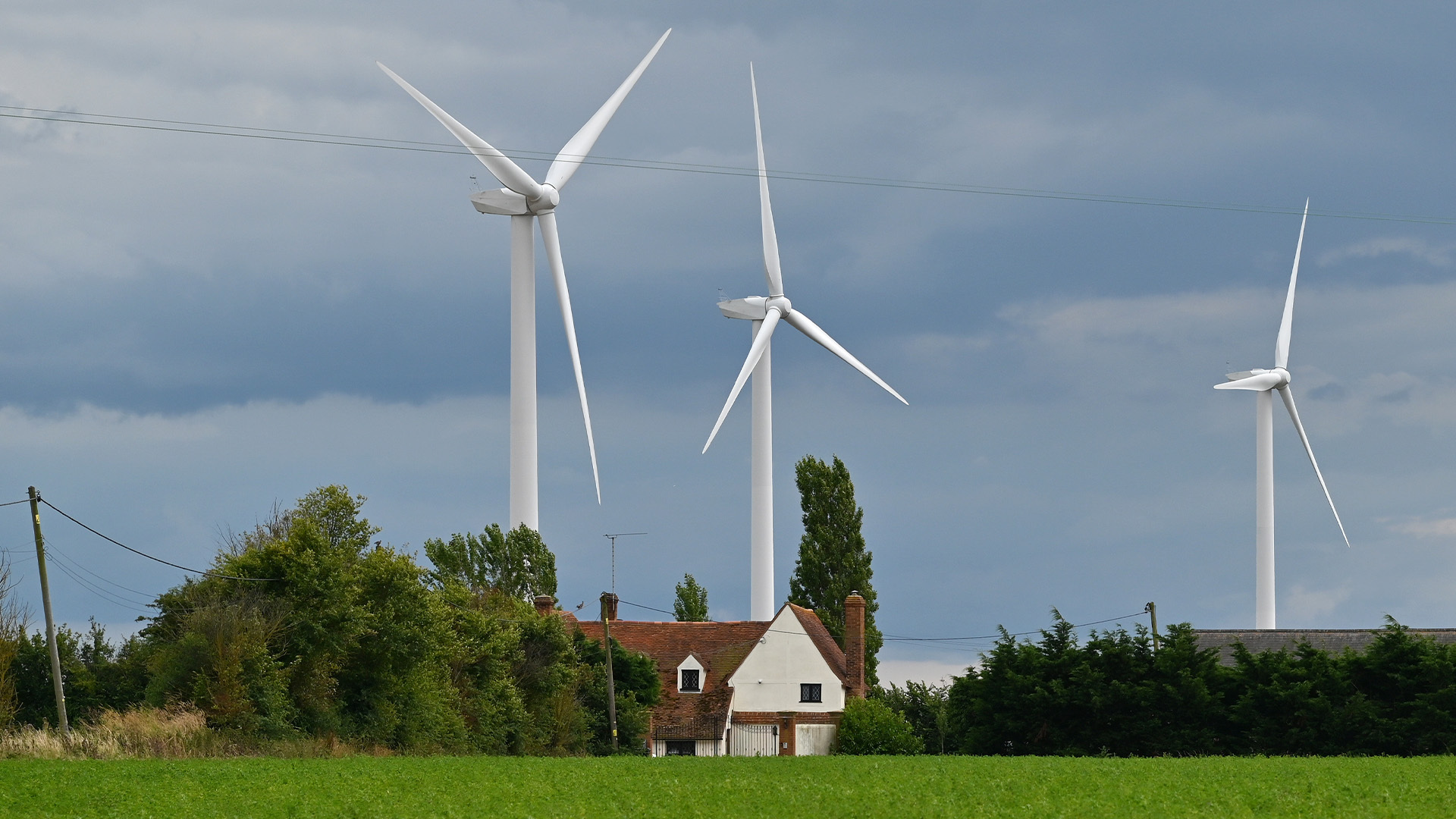
WIND ENERGY GENERATION IN THE U.K. HIT ITS LOWEST MARK IN A DECADE THIS WEEK-
CAUSING POWER PRICES TO SPIKE.
ACCORDING TO THE NATIONAL ENERGY SYSTEM OPERATOR, U.K. WIND TURBINES PRODUCED ONLY ABOUT 0.2 GIGAWATTS DURING THE CALMEST PERIOD ON WEDNESDAY-
COMPARED TO AN AVERAGE DAILY PRODUCTION OF AROUND 10 GIGAWATTS.
SUCH LOW WIND GENERATION LEVELS HAVE NOT BEEN SEEN SINCE 2015-
WHEN THE COUNTRY’S GRID CAPACITY FOR THIS RENEWABLE ENERGY SOURCE WAS LESS THAN HALF OF WHAT IT IS TODAY.
THE DECLINE IN WIND ENERGY OUTPUT LED TO A GREATER RELIANCE ON COSTLIER GAS-FIRED POWER-
RAISING ELECTRIC PRICES TO A TWO YEAR HIGH OF MORE THAN 418 DOLLARS PER MEGAWATT-HOUR ACCORDING TO THE EUROPEAN POWER EXCHANGE.
HOWEVER, METEOROLOGISTS EXPECT A CHANGE IN CONDITIONS TO COME SHORTLY.
A WINTER STORM FUELED BY AN ARCTIC BLAST, IS FORECAST TO BRING STRONG WINDS ACROSS PARTS OF THE UK STARTING THURSDAY-
WITH GUSTS POTENTIALLY REACHING SPEEDS OF 80 MILES PER HOUR IN SOME REGIONS.
WHILE MOST TURBINES AUTOMATICALLY SHUT OFF TO AVOID DAMAGE AT SPEEDS EXCEEDING 55 MILES PER HOUR, THESE WINDIER CONDITIONS ARE STILL EXPECTED TO HELP BRING ELECTRIC PRICES BACK DOWN-
WITH THE EUROPEAN POWER EXCHANGE PROJECTING A RATE OF ABOUT 132 DOLLARS PER MEGAWATT-HOUR.
THE U.K.’S RENEWABLE ENERGY AMBITIONS AIM TO ELIMINATE RELIANCE ON FOSSIL FUELS BY 2030-
BUT INTERMITTENT WIND SUPPLY CONTINUES TO CHALLENGE THE GRID, LEADING TO HIGHER PRICES DURING WINDLESS PERIODS.
FOR STRAIGHT ARROW NEWS, I’M JACK AYLMER.










